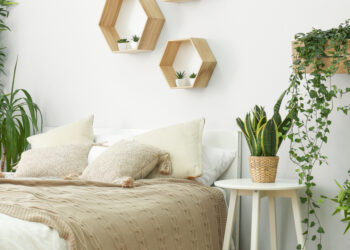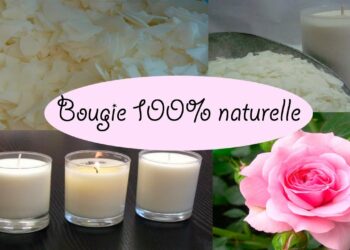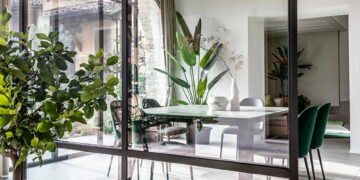sculpture, an artistic form in which hard or plastic materials are worked into three-dimensional art objects. The designs may be embodied in freestanding objects, in reliefs on surfaces, or in environments ranging from tableaux to contexts that envelop the spectator.
Par ailleurs, What kind of art is sculpture?
Sculpture is the branch of the visual arts that operates in three dimensions. It is one of the plastic arts. Durable sculptural processes originally used carving and modelling, in stone, metal, ceramics, wood and other materials but, since Modernism, there has been an almost complete freedom of materials and process.
Ainsi What are the 4 types of sculpture? The Four Sculpture Types
Sculptures fall into four basic categories: molded, cast, carved or assembled. The media an artist uses for molded sculptures include clay, wax, papier-mache and plaster. Cast sculptures involve modeling the sculpture, then making a mold and casting it in a metal or other medium.
What is a sculpture artist called? Definition of sculptor
: an artist who makes sculptures.
Or, What is the purpose of sculptures?
Sculptures represent many aspects of our society and are thus excellent for symbolism. Take an example of the statues used to portray wild animals, or those used to depict people’s ways of lives. These objects serve as a reminder of what was, what is and what could be and are thus crucial in our lives.
How do you make sculpture art?
Sculpting for Beginners: 9 Essential Tips and Tricks to Get…
- Choose a Work Space. …
- Experiment With a Variety of Tools. …
- Sketch a Design. …
- Build an Armature. …
- Add Filler to the Armature. …
- Start With the Basic Form. …
- Forming/Adding Sections/Adding Texture. …
- Curing.
What are the 4 basic sculpture techniques?
Four main techniques exist in sculpting: carving, assembling, modeling, and casting.
What are the 3 main types of sculpture?
What Are the Three Main Types of Sculpture? Historically three different creation methods could define sculpture. These three traditional methods of sculpture-making are modeling, carving, or joining. These creation types could use any of the three traditional primary materials or modern alternatives.
What is the importance of sculpture in our life?
Overall, the central purpose of sculptures and all works of art is to send a message. Artists create sculptures to express ideas, convey religious beliefs, and tell the story of significant figures in history and even mythological adventures.
What is sculpture drawing?
Drawing sculpture and sketching ideas is often the first step any sculptor will take before creating a piece. It is, in and of itself- somewhat of an art form. Drawing sculpture and sketching ideas is important for the artist to develop and understand what they want to create.
What are the 3 types of sculpture?
These three traditional methods of sculpture-making are modeling, carving, or joining. These creation types could use any of the three traditional primary materials or modern alternatives.
Which paints are used for sculpture?
5 Different Types Of Art Paint
- Acrylic – Acrylic paints are extremely versatile, and ideal for fine brushwork, glazing, staining, water media techniques and many more. …
- Oil – Oil-based paint is very durable and provides a glossy-looking finish. …
- Watercolor – …
- Gouache –
What are the 5 types of sculpture?
Types of Sculpture
- Relief Sculpture. …
- Sculpture in the Round. …
- Carved Sculptures. …
- Cast Sculptures. …
- Additive Sculpture. …
- Subtraction Sculpture. …
- Assembled Sculptures. …
- Modeled Sculptures.
What are the two types of sculpture?
Basic Forms of Sculpture Now Outdated
Previously, the history of art understood only two basic sculptural forms: sculpture in the round (also called free-standing sculpture) and reliefs (including bas-relief, haut-relief, and sunken-relief). Nowadays, new forms of light-related sculpture (eg.
What are the five styles and movements in sculpture?
Modernist sculpture movements include Art Nouveau, Cubism, Geometric abstraction, De Stijl, Suprematism, Constructivism, Dadaism, Surrealism, Futurism, Formalism Abstract expressionism, Pop-Art, Minimalism, Postminimalism, Land art, Conceptual art, and Installation art among others.
What are the 8 elements of sculpture?
What are the 8 elements of sculpture? In art and design, the elements of form, color, value, texture, shape, and space are arranged or composed in accordance with the principles of alignment, contrast, emphasis, movement, rhythm, unity, and variety, thus creating stability and harmony for the painting.
What are the 6 types of sculpture?
Based on their sculpture forms and Techniques,
- Sculptures on Relief. – High Relief. – Low Relief. – Bas Relief. – Sunken Relief.
- Carved Sculptures.
- Full Round Sculpting.
- Cast Sculptures.
- Modeling Sculptures.
- Assembled Sculptures.
- Installation Sculptures.
- Kinetic Sculptures.
What are the 7 elements of sculpture?
The seven elements are line, color, value, shape, form, space, and texture. We are going to review each of these in detail below.
What is the role of sculpture in public art?
8 Its purposes include: to inspire citizens and promote a sense of community identity, to record and celebrate important events in the history of a community, and to generate public discourse.
How can you use sculpture in your daily lives?
All kinds of art can affect our mood in a positive way, making us feel happier, calmer, or even inspired to do something. Everywhere you go art is evident. Parks often use sculptures to add interest and to inform people. Posters on walls give information and motivation.
What makes sculpture unique?
Unlike painting, which traditionally represents an illusion of three-dimensional space on a flat surface, sculpture actually inhabits the space shared by the viewer. Sculpture is also tactile—one could actually touch it and feel its various textures and forms.
How do you draw like a sculpture?
How do you sketch a sculpture?
What are the 7 general kinds of sculpture?
Types of Sculpture
- Relief Sculpture. …
- Sculpture in the Round. …
- Carved Sculptures. …
- Cast Sculptures. …
- Additive Sculpture. …
- Subtraction Sculpture. …
- Assembled Sculptures. …
- Modeled Sculptures.










